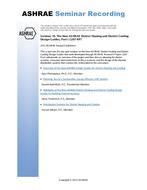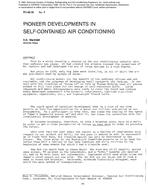During cold weather, the outside air temperature provides opportunities for saving energy. Using a lower-cooling tower water supply temperature, a higher chilled-water supply temperature, a building system’s economiser air cycle, and free cooling are some of the methods used. All of these methods have been used to cool a large complex of research laboratories, computer rooms, and office buildings, but free cooling in particular has been used for the past 16 years. Free cooling has been used whenever the outside wet-bulb temperature dropped to 45 deg F (7.2 deg C) or below, allowing the compressor to be shut down. Thermosiphon and plate heat exchanger (PHE) systems have saved enough compressor electric power to pay for the installation costs in less than 2 years. To maximise the hours of free-cooling operation, the chilled-water supply temperature has been allowed to vary, but this has caused problems in controlling temperature and humidity for the various building systems. At the lower-than-normal cooling tower water temperatures required for free cooling, ice forms in the cooling tower, which affects tower operation and increases maintenance costs. Recently, it was decided that 45 deg F (7.2 deg C) chilled water should be supplied year-round and the temperature not be allowed to vary, but this has reduced the potential savings from free cooling. Reviews operating experience and presents some advantages and disadvantages of using cold cooling tower water to reduce the operating costs of a central chilled-water system during cold weather operation.
KEYWORDS: winter, cooling towers, operations, energy conservation, wet bulb temperature, thermosiphon, flat plate heat exchangers, cooling, chilled water supply, temperature, humidity, costs, performance, maintenance, free cooling.
Citation: Symposium, ASHRAE Trans. 1994, Vol.100, Part 1,
Product Details
- Published:
- 1994
- File Size:
- 1 file , 500 KB
- Product Code(s):
- D-17814


